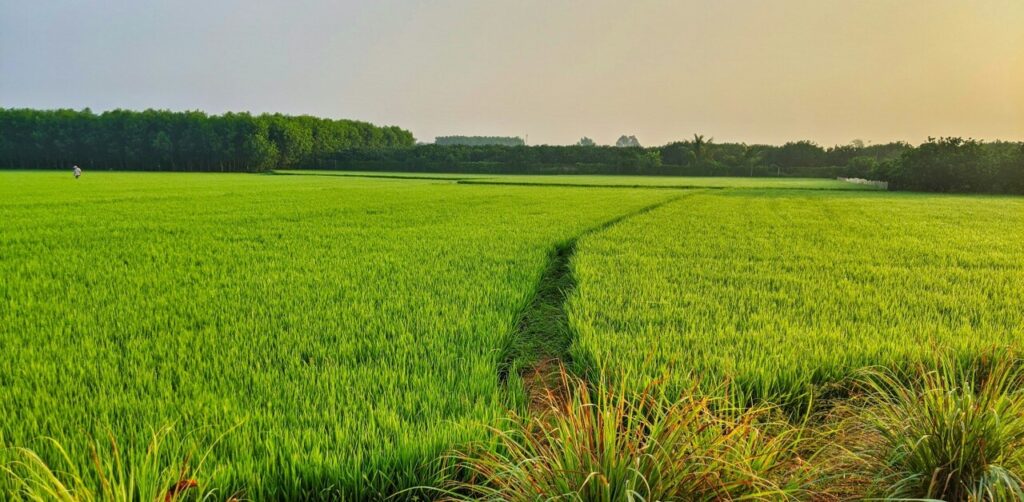Cropping patterns can be largely classified into two distinct categories: Kharif crops and Rabi crops. The Indian economy is based on agriculture, and the mode of farming in this region mostly relies on the monsoon season. The crops planted at the beginning of the monsoon season and collected at the end of the rainy season are known as kharif crops.
Monsoon crops, also referred to as kharif crops, are crops that are planted in June when the south-west monsoon has begun and harvested at the start of autumn, usually in September to October. These are crops that are cultivated in warm and damp climates and highly depend on rainfall to grow.
The rice, maize, cotton, jowar, bajra, and pulses are some of the most vital Kharif crops. Kharif crops are a vital part of India’s agricultural sector, contributing to the feeding of millions of people, serving as raw materials for industries, providing rural employment, and enhancing the country’s food security and food exports.
In this article, we will discuss Kharif crops, their nature, and significance, and some examples of Kharif crops. This article provides a clear example of the Kharif crop..
Table of Contents
What are the Kharif Crops?
The Kharif crops, commonly known as monsoon crops, are planted between June and October, depending on the southwest monsoon arrival in various parts of India.
Kharif is a name that has a derivation of not only the Arabic word meaning Autumn, but also the fact that crops are harvested during this time.
The sowing usually commences during the initial monsoon rainfalls in June or July, and harvesting is normally conducted in the months of September through October.
These plants need very hot and humid climates and sufficient rainfall.
Instead of using irrigation and the low climatic conditions of Rabi crops, Kharif crops are highly subject to the natural distribution.
Climatic Conditions
To grow successfully, these crops need to have particular climatic conditions.
Some of the typical conditions are:
1. Rainfall: This must be sufficient and decentralized rainfall of 75 cm to 150 cm. The demand, however, differs for each crop.
An example is that rice needs a lot of rainfall, whereas millets can be cultivated with relative dryness.
2. Temperature: It must be warm and humid, with a temperature of 20°C to 30 °C being ideal.
3. Soil Type – Alluvial soil, black soil, and loamy Soil are the best-suited soils to various Kharif crops.
To illustrate, the black soil is ideal for cultivating cotton, whereas alluvial soil is the cultivating rice.
Examples of Kharif Crops
India produces some of the biggest Kharif crops, such as:
- Cereals-Rice, maize, jowar, bajra, ragi.
- Pulses– Arhar (pigeon pea), urad, moong.
- Oilseeds: soybean, groundnut, sunflower, sesame.
- Commercial crops: Cotton, sugarcane, jute.
- Vegetables and fruits: tomato, brinjal, chili, mango, papaya, guava.
All these crops possess regional meaning and appropriateness in accordance with the climatic and soil factors.
If you want to buy the “Oxford Student Atlas for India“, then you should visit here.

Importance of Kharif Crops in India
1. Food Security: Kharif crops such as rice, maize, and pulses form part of the staple food for millions of Indians.
2. Economic Value: Commercial crops like cotton, sugarcane, and jute are sources of raw materials in industries such as textiles, sugar, and paper that enhance the industrial economy.
3. Employment Generation: The Kharif season involves millions of farmers and agricultural workers, which guarantees employment and rural livelihood.
4. Export Contribution: This category of exports includes a wide variety of Kharif crops that bring about good export foreign exchange, including basmati rice, cotton, as well as groundnut.
5. Assistance to Allied Sectors: Crops such as maize and soybean form an important part of poultry feed, livestock, and the dairy industry.
Challenges in Kharif Crop Cultivation
Although very important, Kharif crops are subjected to several challenges:
1. Dependence on Monsoon: Late, scanty, or untimely rainfall may lead to immense losses of crops.
2. Floods and Droughts: Oversupply of rain causes flooding and loss of crops, whereas droughts leave yields in disarray.
3. Pest and Disease Attack: Pests such as stem borers and disease-causing agents such as blight tend to be more commonly experienced in warm, humid environments.
4. Soil Erosion: During rain, heavy downpours may erode the fertile soil along the top, leading to a decrease in crop yield.
5. Market Fluctuations: Overproduction or a deficiency of the right storage means usually causes farmers to suffer unstable prices.

Government Initiatives for Kharif Crops
The Indian government has created several programs to enhance the productivity that support farmers during the Kharif season:
1. Pradhan Mantri Fasal Bima Yojana (PMFBY): Provides crop insurance against natural calamities to the farmers.
2. Minimal Support Price (MSP): This guarantees a fair price to farmers of crops such as rice, maize, and cotton.
3. National Food Security Mission (NFSM): Supposedly is set to achieve greater levels of production of pulses, rice, and coarse cereals.
4. Irrigation Schemes: Schemes such as PMKSY, Pradhan Mantri Krishi Sinchayee Yojana, irrigate to diminish reliance on the rain.
If you want to read an article about Pradhan Mantri Fasal Bima Yojana(PMFBY), then you can click on it.

Conclusion
Kharif crops are highly significant to the agricultural system in India. Not only do they supply staple foods such as rice and maize, but they also serve as basic industry raw materials, as well as exports and employment in the rural areas.
Nevertheless, they highly depend on monsoon rainfall, which predisposes them to dangers that are connected to the climate.
Through newer irrigation practices, newer production techniques, and government subsidies, farmers can rise to the occasion and have a sustainable increase in Kharif crops.
The example of rice emphasizes how just one Kharif crop has the capacity to nourish millions and boost the economy as well as cultural traditions.
Therefore, these crops are not only the seasonal harvests but the lifeline of Indian agriculture as well as the image of the Indian reliance on the rhythms of nature.

